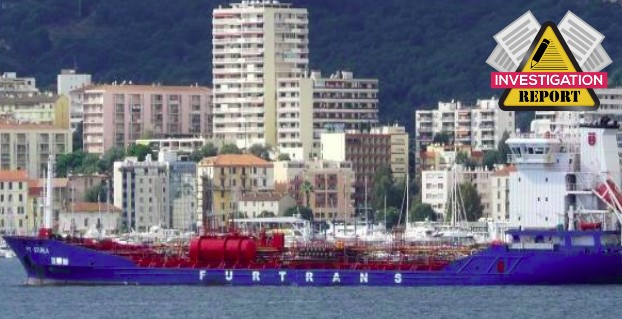Transport Malta issued an investigation report on the serious injury of two crew members onboard the tanker FT Furla, during mooring operations in Westlius Lock, Terneuzen, in May 2020. Analysis revealed that the mooring rope was in good condition, but its breaking load was markedly less than the certified breaking strength.
The incident
At 1621, on 01 May 2020, while the Maltese registered oil/chemical tanker FT Furla was tying up on the Westslius Lock, two crew members were struck by a mooring rope onboard.
[smlsubform prepend=”GET THE SAFETY4SEA IN YOUR INBOX!” showname=false emailtxt=”” emailholder=”Enter your email address” showsubmit=true submittxt=”Submit” jsthanks=false thankyou=”Thank you for subscribing to our mailing list”]
As a result, the bosun suffered superficial injuries on his arm and was treated onboard by the medics. The AB was taken to a local hospital in Goes, where he was medically examined. He was found to have suffered head trauma with multiple fractures on the left side of his face and contusion hematoma to both eyes. Following initial treatment at the hospital, the AB could travel home to the Philippines for further medical treatment.
The Marine Safety Investigation Unit (MSIU) established that FT Sturla was gently moving ahead along the Lock, when the crew members ran out the stern line and forward back spring to make fast.
The spring line came under heavy load and parted. The analysis of the mooring rope revealed that the rope was in good condition, but its breaking load was markedly less than the certified breaking strength.
Conclusions
- The failure of the mooring rope (fault area) was attributed to fusion due to the exothermic enthalpy resulting from excessive traction;
- The mooring rope tensile test revealed a reduction of more than 50% of its original certified breaking load;
- The optical microscopy examination of the strands and braid identified faces of rupture;
- Visual inspections of mooring ropes carried out by the crew members at regular intervals did not reveal much, with respect to the residual strength of the mooring rope;
- The mooring equipment was not required to be fitted with mechanical / electronic indicators to show the actual energy stored in the mooring rope;
- The probability of material defect of the mooring rope was not excluded by the safety investigation.
The safety investigation found it very unlikely that the mooring rope could have degraded to such an extent and in such a short period of time. Taking into consideration the above and the available information, including post-accident laboratory tests and microscopic analysis, the MSIU did not exclude the possibility of material defect in the mooring rope fibres, although this could not be confirmed,
…the report reads.
Actions taken
During the safety investigations, the company has issued a bulletin to share information on this accident with the fleet vessels. Information on the accident is also being discussed with joining masters.
In addition, all mooring ropes deemed ‘defective’ have been replaced on all the fleet vessels.
The company has also developed specific mooring procedures for lock operations and issued instructions to vessels on the saving and retrieving of VDR data in the event of an accident.






























































